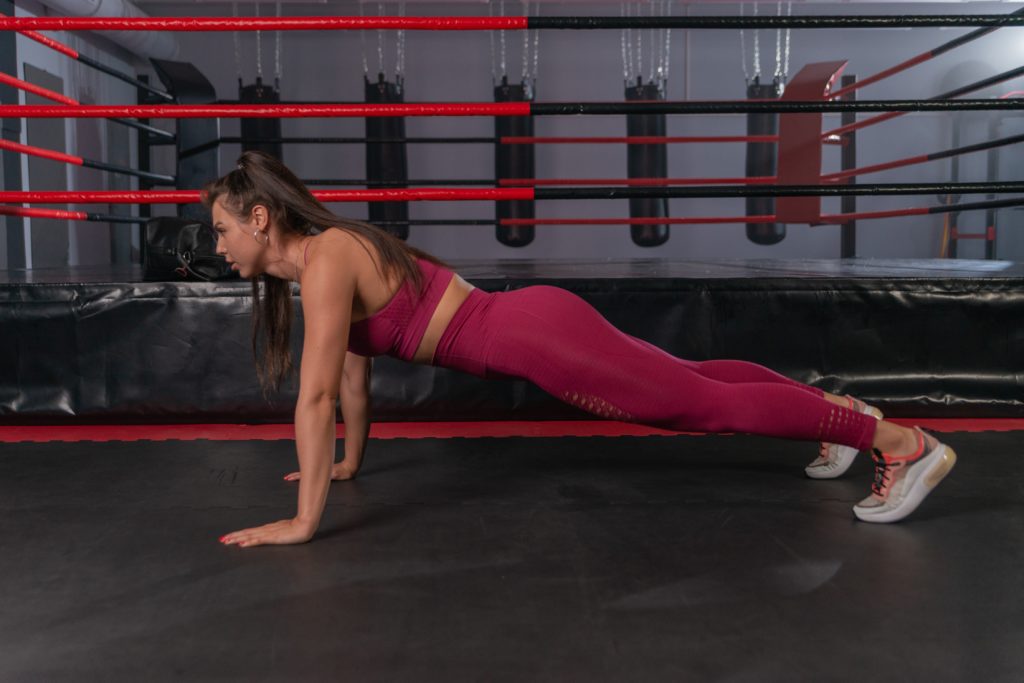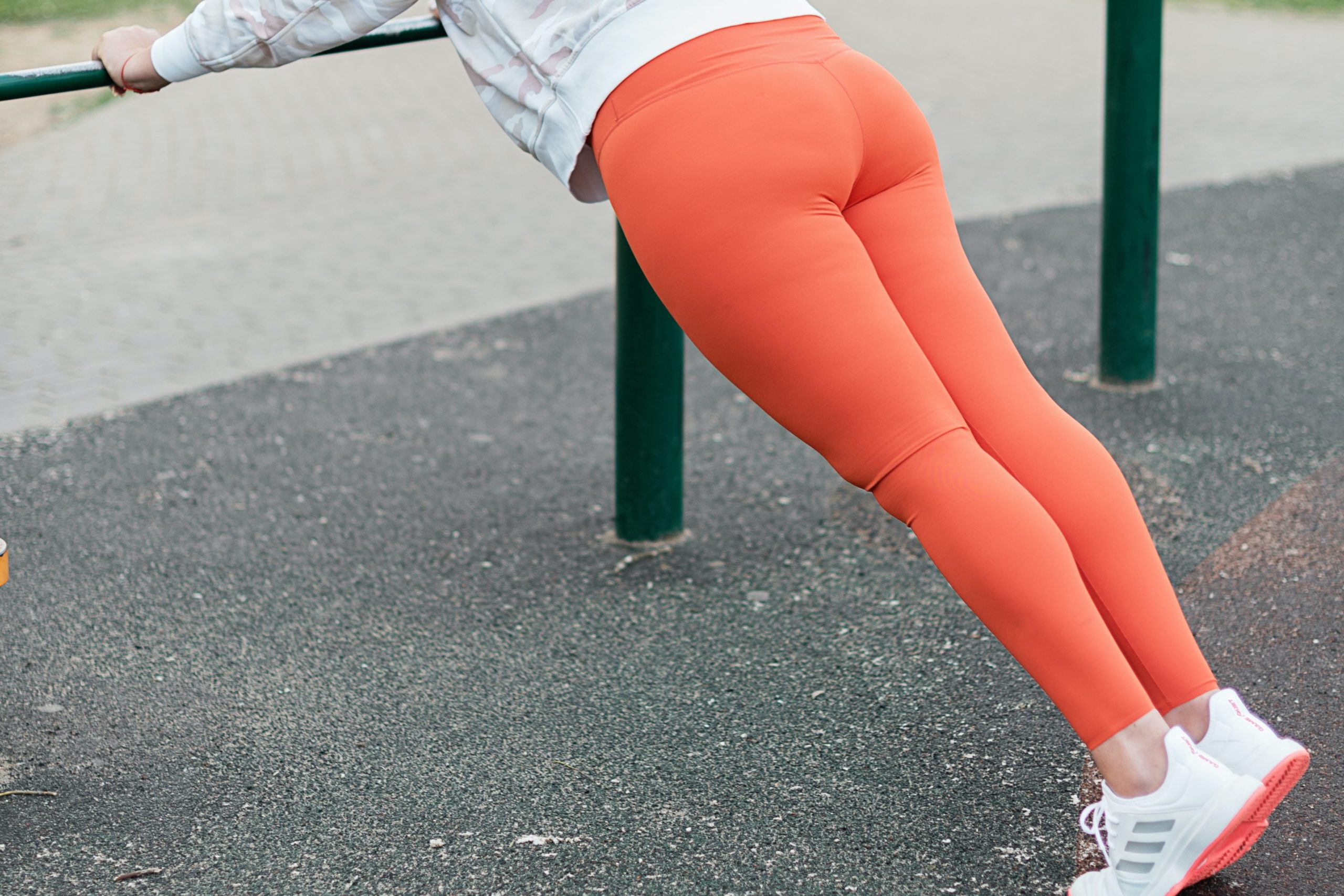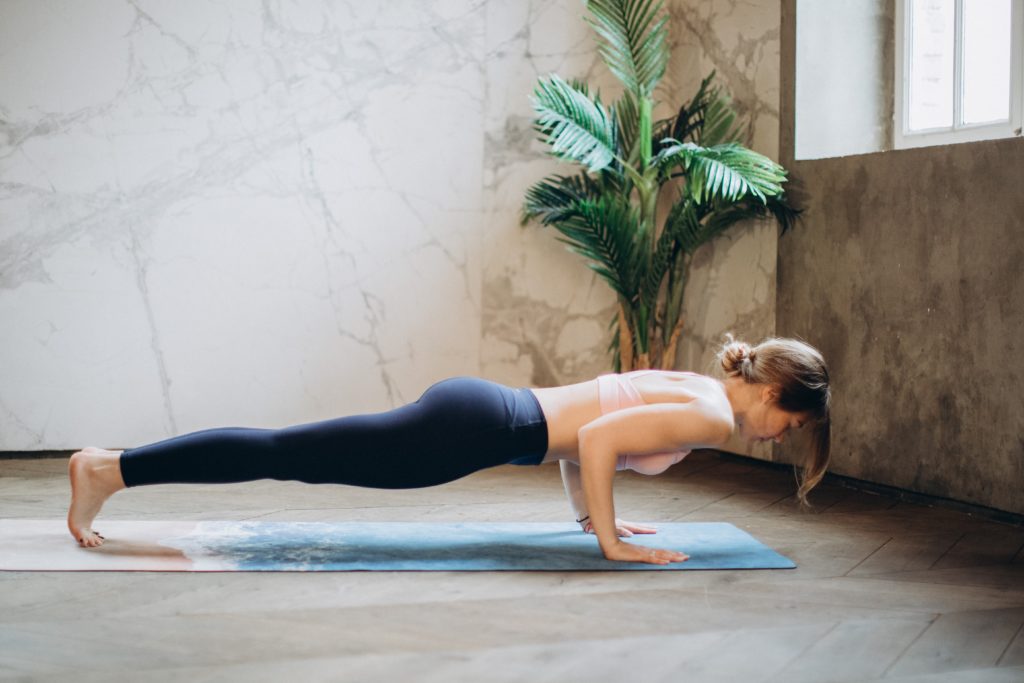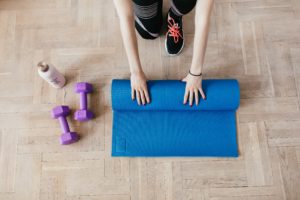How to Build Up to a Push Up – modifications to gain strength
There is no reason to feel bad about not being able to push up. Fitness has and always will be a journey and we will start at different points.
Push-ups are not everyone’s forte, certainly not mine.

Confession time, I only built up the strength to do standard push-ups last year. In the past, I would only try to push up from my knees, and while there’s no shame in knee push-ups, I truly wanted to learn how to do one from the toes.
Now, after using this progression technique, I’m on 20 per set and counting, and will soon be ready to make them even more challenging (insert: me dreading one-handed push-ups).
Keep reading to find out how to safely and effectively build-up to a push-up with modifications and variations that train the muscles and joints to do a push-up.
The answer to questions like “what muscles do a push-up work out?”, “How can I build up to a push-up?”, “Is there something easier than knee push-ups?” and more today!
What is a Push Up
Push-ups are a kind of body weight exercise, calisthenics, that engage the entire core, shoulders, and arms.
You start in a high plank position, then bend your elbows to a 90-degree angle, and lift back up.
That is a single standard push-up.
Through these modifications, you’ll be able to find the strength to build up to a standard push-up given time.
What Muscles Does a Push Up Work?
Push-ups engage the entire core, particularly the plank position involved in holding the top of a push-up.
As you move your body down, bending at the elbows, you work out the triceps, pectoral muscles, and shoulders muscles.
Even the muscles of your back are engaged to a certain extent.
Plus, if you are engaging your core, drawing the navel back and up, throughout the entire push-up, you will strengthen the abdominal muscles, lower back, and even glutes.
All this combined makes push-ups an amazing exercise that works out large muscle groups in the body.
How to Train to Do Push Ups
Here is an effective and safe way to train your body to have the strength to do a push-up today!
Level 1: Wall Push Ups
As the name implies, wall push-ups are done at a wall.
Stand a couple of feet away from a wall, until you are far enough to completely stretch your arms and touch your hands flat against the wall.
Bend your elbows outwards, moving your chest towards the wall, then straighten. That is a single rep.
Do this until you can do 3 sets with 60 repetitions in each set. A set should be done with no breaks, but you can take a small rest in between sets.
This modification will help train you to have a proper push-up position, decreasing the chances of injury due to improper form.
Practice engaging your core during these sets to protect the lower back and get an extra workout in your abdominal region.

Level 2: Diagonal Push Ups
These are done on a railing, table, or stable object. Your body will be in a diagonal position as you push yourself down and up on the object.
Try to find something higher than your hips, then work lower.
The lower the object, the more challenging the move of the push-up.
Do this until you can do 3 sets of 45 reps.
Level 3: Kneeling Push Ups
Yeah, I don’t think girls like the way these were called girl push-ups (insert middle school me cringing at the name when told to do these).
Knee push-ups are a great workout in and of themselves, as they do engage all the muscles of a standard push-up well.
The goal for this one is 2 sets of 20.
To make knee push-ups more challenging, keep your toes in the ground as you move up and down, as this will engage more of the core.
If you have knee pain, cushion the knees with a pillow or towel.
Level 4: Half & Half Push Ups
These are a great in-between step from the knees to the toes.
Simply go onto your toes in a high plank position, the top of a standard push-up, and lower down until you cannot hold the pose anymore. At that point, use your knees to assist you on the rest of the way down.
As you rise, lift back onto the toes when you feel like you have the strength to do so.
Do this until you can do 2 sets of 10 reps.
Level 5: Standard Push Ups
At this point, you should be able to do a standard push-up!
Yay.

Tips for Push Ups
Here are some troubleshooting tips for your push-up journey.
Push-Ups Should not Hurt
A push-up should not hurt your joints in your knees or wrists.
If you are experiencing pain, go back to an easier modification for a while.
The modifications train not only the muscles but the joints as well, and joints may take a bit more time to gain strength and mobility.
Do an Isometric Hold to Do More Reps
There is a hack to get more reps of a push-up in.
Find a stable pole and hold it. With one arm, push it away as the other arm pulls, with all your strength. Switch arms and repeat.
This should help you do a couple more reps.
Do Some Weight Training for the Arms and Back
To strengthen the muscles, try doing some tricep and bicep curls.
Do some shoulder presses and rows too, for the shoulder and back muscles.
This can help increase muscle in these areas to do push-ups.
The Takeaway
Anyone can do a push-up. It just takes time as fitness is a journey.
By building up to a push-up, you can properly train the muscles and joints to perfect your form and reduce injury.
Start with wall push-ups, then moving on to diagonal ones.
After that, you can hit the ground with kneeling push-ups and finally toe push-ups.
Push-ups should not hurt, so remember to not rush yourself between moves and give your body time to rest and recover.
The modifications are there to safely and effectively teach the body and the mind to perform a push-up and build strength gradually.
Recovery is just as important as exercise, as it is your body repairing and strengthening the muscles.
Remember, health starts from within! Nourish yourself with little changes, with good food, exercise, and habits that will improve wellness and wellbeing exponentially!





